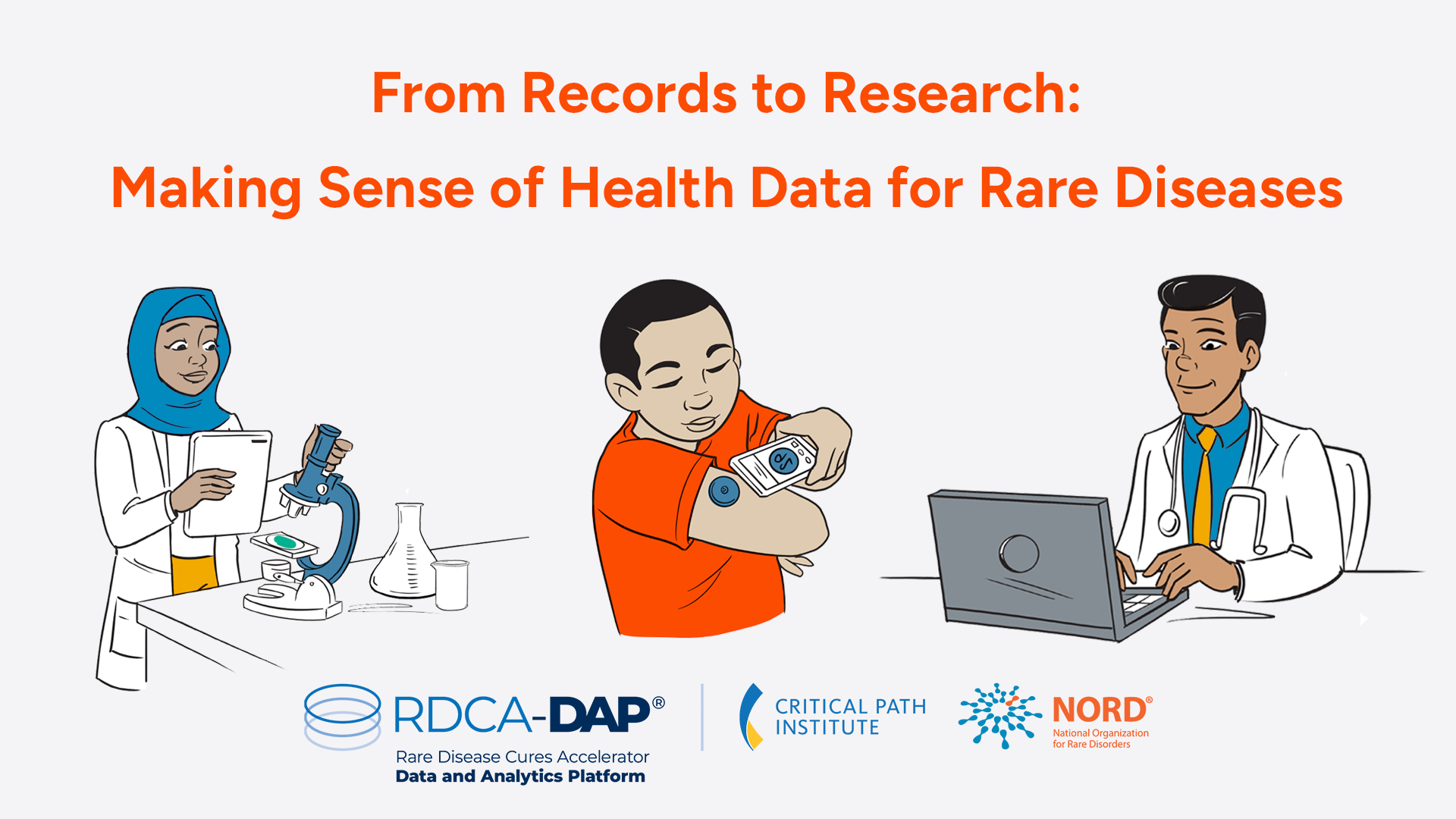From Records to Research: Making Sense of Health Data for Rare Diseases

About Course
Data literacy is essential for patients, families, and patient advocates in the rare disease community because it empowers them to:
- make informed decisions,
- advocate effectively, and
- contribute to research that can improve treatments and care.
Course Aims
- Explain the role of data in healthcare: Introduce how different types of health data (clinical, patient-generated, and research) are collected, stored, and used to improve healthcare and advance medical research, with a focus on rare diseases.
- Increase understanding of electronic health records (EHRs) and interoperability: Provide a clear overview of how EHRs work, why standardized coding systems matter, and the benefits and challenges of sharing health information across different systems.
- Introduce patient-generated health data: Show how medical devices and digital tools such as wearables collect and share information that supports diagnosis, treatment, and ongoing monitoring.
- Demystify research participation and data use: Explain how research studies are conducted, the types of data they use, and important considerations for patients and caregivers before joining a study or clinical trial.
- Highlight the importance of data quality, accuracy, and privacy: Emphasize why reliable and standardized data is essential, outline privacy protections such as HIPAA, and discuss responsible data use.
- Connect data to improved care and innovation: Illustrate how high-quality, well-used health data leads to improved diagnosis, treatment, and research breakthroughs for rare diseases.
Course Content
Understanding Clinical Data
-
Module Introduction
-
Knowledge Check: Pre-Test
-
Glossary of Terms in this Module
-
What is Clinical Data?
05:57 -
Knowledge Check: Post-Test
-
Module Evaluation
